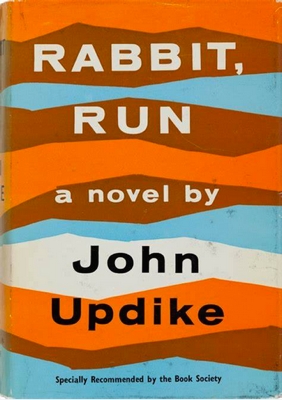Given an article about the daiquiri, it would be reasonable for a lover of literature to expect to read about Ernest Hemingway and one of his two favorite Havana, Cuba bars: La Floridita, “Cradle of the Daiquiri cocktail.” The Floridita is here as a vintage photograph, but the writer mentioned isn’t “Papa” Hemingway, who is commemorated in a statue at that bar. Instead, the writer is John Updike.
In “The Spirits #17: The Cardamon Daiquiri,” Richard Godwin offered the recipe and added, “If you haven’t ever made a basic Daiquiri, please do so immediately – follow the recipe minus the cardamon. I figure with winter, you either need to lean into it or run away from it. Run away run away run away run away run away!” Which, of course, led him to Rabbit Angstrom.
“There’s a memorable double-date scene in John Updike’s Rabbit, Run, where our protagonist Harry Angstrom orders a Daiquiri in a Chinese restaurant because both of the girls have. He imagines it will taste like limeade…and finds it does sort of taste like limeade, ‘riding like oil on a raw transparent taste.’ He has a few more and when he emerges, ‘the pavement is a shadow of the Daiquiri’s luminous transparence; he is light-hearted, and skips once, to get in step with the girl he adores.’
“Like Updike’s midcentury hero, the Daiquiri (rum, lime, sugar) is simple and direct but capable of the greatest lyricism. When its constituent parts are held in perfect harmony, something amazing happens. The dogs lose their bark; the eels cease to reel; oil paintings come to life. And then everything resets and goes back to normal and everyone forgets that ever happened. There is a luminous transparence around, though, if you care to look.”












